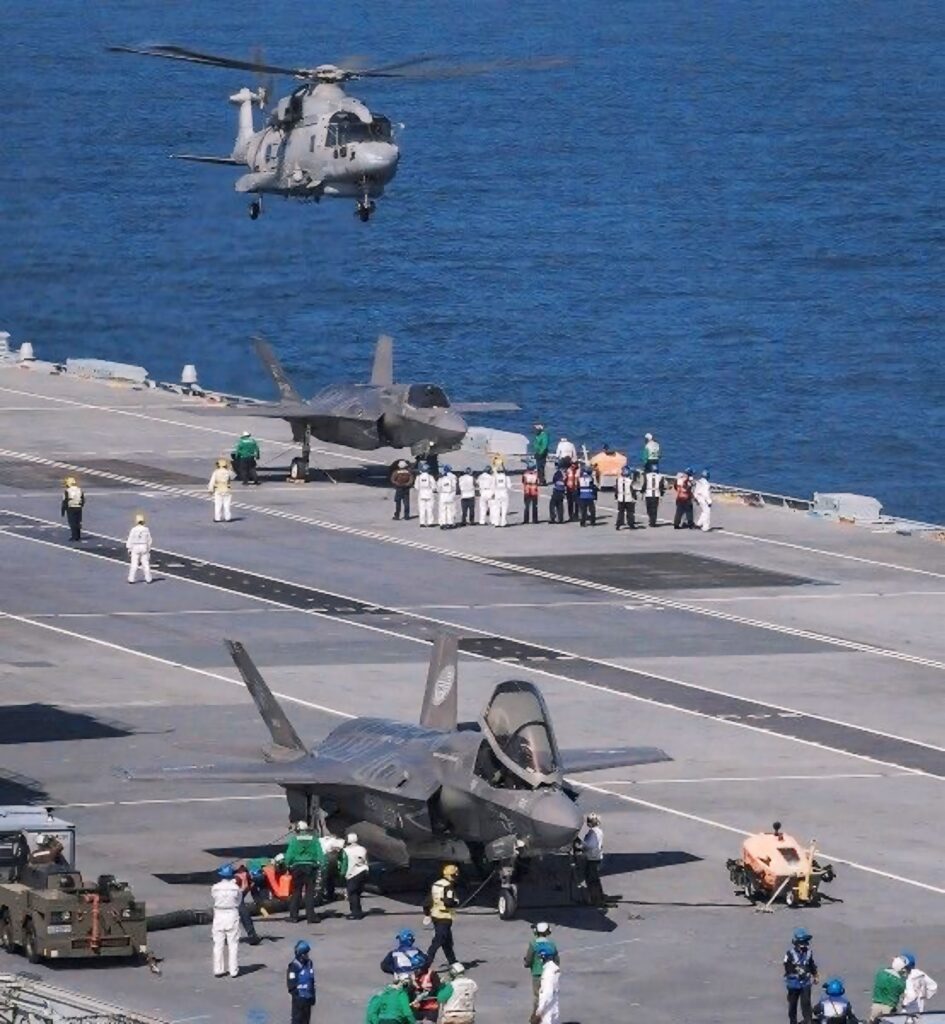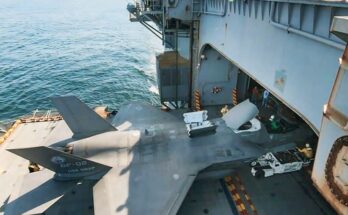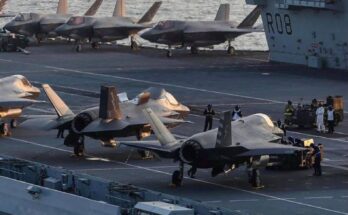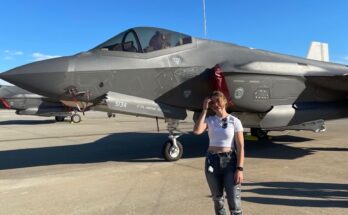
The flight deck of HMS Queen Elizabeth (R08) is the centerpiece of Britain’s flagship aircraft carrier and a defining feature of her operational capability. Stretching some 280 meters in length and 70 meters across at its widest point, it provides the vast expanse needed to launch and recover advanced aircraft. Unlike traditional carriers that use catapults and arrestor wires, HMS Queen Elizabeth was designed with a ski-jump ramp at the bow. This upward-curved section assists short take-off and vertical landing (STOVL) jets, most notably the F-35B Lightning II, in becoming airborne with heavy payloads while conserving fuel.
The deck itself covers an area of roughly four acres, making it the largest ever built for a Royal Navy warship. Its sheer size allows for the simultaneous operation of multiple aircraft, ranging from stealth fighters to rotary-wing helicopters used for transport, surveillance, and anti-submarine warfare. At full capacity, the ship can accommodate up to 36 F-35Bs alongside several helicopters, though a typical deployment might see fewer, depending on mission needs. This flexibility makes the flight deck both a launch pad for combat power and a platform for humanitarian and disaster relief operations.
Two aircraft lifts connect the flight deck to the massive hangar below. Each lift is capable of carrying up to 70 tonnes, enough to move two fully armed F-35Bs at once. These lifts are positioned on the starboard side so they do not obstruct flight operations, a design decision that helps keep the deck clear and ready for fast turnarounds. The surface of the deck itself is coated with a heat-resistant material designed to withstand the intense downward blast from the F-35B’s jet exhaust during vertical landings. Without such protection, the surface could quickly degrade under repeated operations.
Flight deck operations are a complex choreography. Aircraft handlers, often referred to as the “chockheads,” wear brightly colored jerseys that identify their roles. This system, borrowed from the U.S. Navy, ensures clarity during the high-tempo and potentially hazardous environment of launch and recovery. The island superstructure, located starboard amidships, provides commanding views of the deck. In a unique twist, HMS Queen Elizabeth has two islands rather than one. The forward island houses the bridge for ship control, while the aft island is dedicated to flight operations. This separation improves efficiency and resilience, ensuring one island could continue operations if the other were ever damaged.
The deck is not just about military strength. Its layout and systems also support a wide range of tasks, including humanitarian aid, disaster relief, and joint operations with allied nations. The ability to embark helicopters like the Merlin or Chinook means the ship can rapidly move supplies, evacuate civilians, or deliver medical support in crisis zones. In this sense, the flight deck is as much a tool of diplomacy as it is of defense.
In sum, the flight deck of HMS Queen Elizabeth R08 represents the modern face of British naval power. Its design balances cutting-edge technology with practical versatility, allowing the Royal Navy to project air power across the globe. More than just steel and asphalt, it is a stage where strategy, engineering, and human skill come together to serve both national defense and international cooperation.


